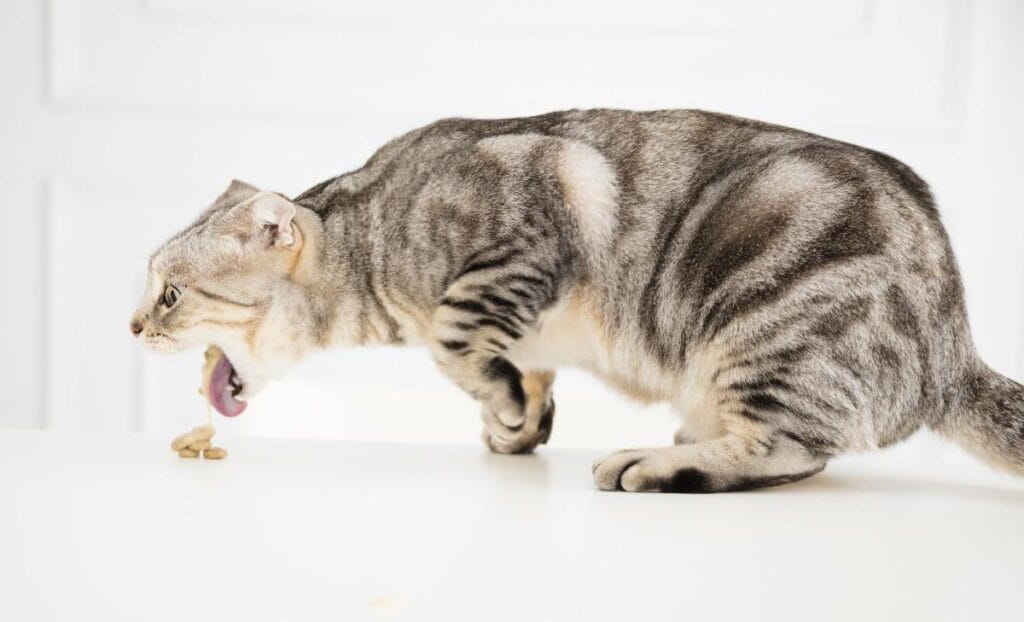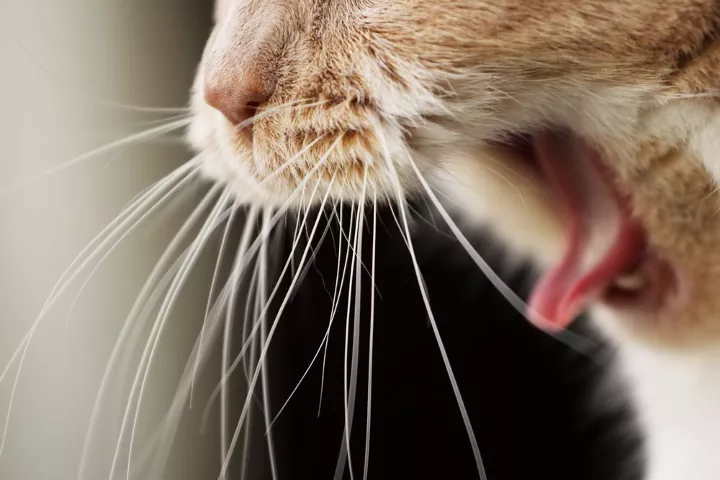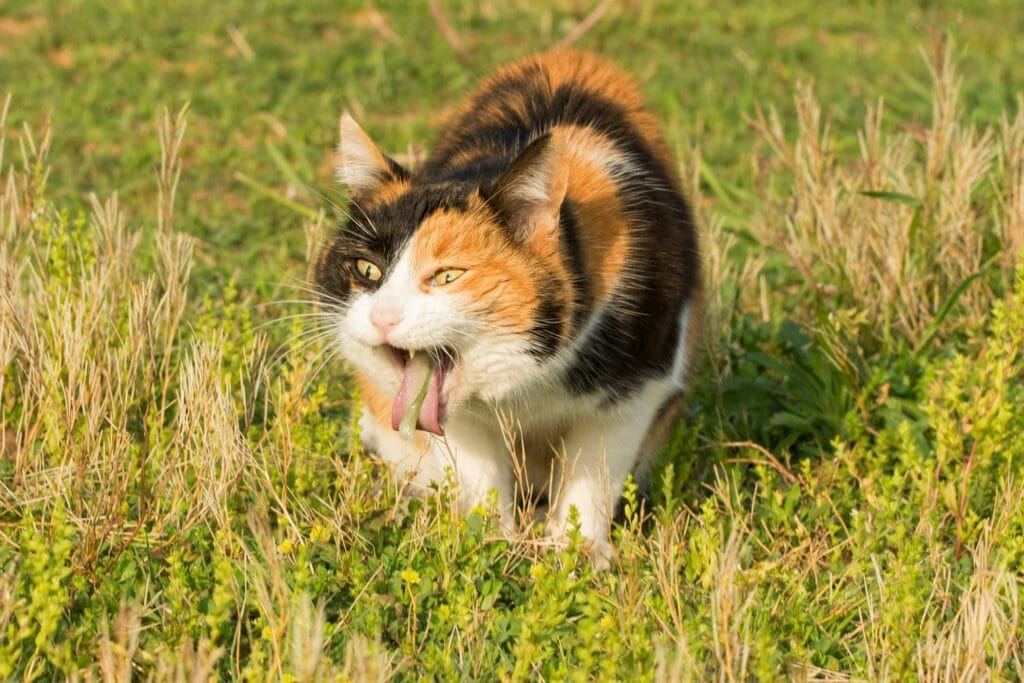7 Signs Cat Vomiting Is Serious (+ When to Call a Vet)

Understanding the Real Signs Behind Cat Vomiting and When You Should Worry
Let’s be real—few things jolt a cat parent more than that unmistakable sound: hurk-hurk-hurk… splat. You rush over and find a pile of foamy goo or half-digested kibble on your rug. Ugh. Gross. But more importantly—should you be worried?
Cats vomit. Sometimes it’s no big deal. Other times, it’s a flashing neon sign that something is seriously wrong. So how can you tell the difference?
In this article, we’ll walk you through everything you need to know about cat vomiting—from what’s normal, what’s not, what that weird yellow stuff means, and how to decode the cat vomit color chart like a pro. We’ll also break down the dreaded question: vomiting in cats—when to worry?
With expert input from vets, real-life stories, and practical tips for pet parents, consider this your go-to guide to keep your feline feeling fabulous. 🐾
Table of Contents
Why Do Cats Vomit?
Before you panic, let’s take a step back. Not all cat vomiting is a cause for alarm. Some cats just have sensitive stomachs—others are drama queens who eat too fast and regret it five seconds later.
Dr. Sarah Thompson, DVM and feline health guru with 15+ years of experience, explains it like this:
“Occasional vomiting is fairly common in cats, especially those with long hair or who eat quickly. But persistent, unusual, or violent vomiting episodes? That’s a red flag.”
Common Causes of Cat Vomiting:

- Hairballs – Yep, those fuzzy fur sausages are classic culprits.
- Eating too fast – Slow down there, Garfield!
- Diet changes or food allergies – Cats can be surprisingly picky (and sensitive).
- Parasites or infections – Worms, bacteria, or viruses.
- Serious health issues – Kidney disease, pancreatitis, IBD, cancer…
So how do you know what’s what? Start by watching the patterns—and the puke itself.
Decoding the Cat Vomit Color Chart
Let’s get gross for a second. The color of your cat’s vomit can tell you a surprising amount. Grab your detective hat—it’s time to decode:
| Color | What It Might Mean |
|---|---|
| White foam | Empty stomach, acid buildup, or early hairball sign. |
| Yellow liquid | Bile—often from an empty stomach, digestion issues, or liver trouble. |
| Bright red | Fresh blood—mouth, esophagus, or recent injury. |
| Dark brown / coffee ground | Digested blood—possible ulcers or internal bleeding. |
| Green | Grass or plants—possibly toxic, especially if paired with diarrhea. |
| Undigested food | Ate too fast, food intolerance, or stomach can’t digest properly. |
🩺 “If your cat vomits more than once in 24 hours—or if you see blood—call your vet,” says Dr. Thompson. “A quick photo can help them diagnose it faster, too!”
7 Serious Signs You Shouldn’t Ignore 🚨
So, when does vomiting move from meh to major concern? Let’s walk through the seven big warning signs:
1. Frequent Vomiting
A hairball every two weeks? Not a big deal.
Puking every day or multiple times in a row?
Persistent vomiting can cause dehydration, nutrient loss, and weight loss—and often signals something deeper, like:
- Pancreatitis
- Inflammatory Bowel Disease (IBD)
- Parasites
- Even cancer
Vet Tip: Start a “vomit diary.” Record time, food, and what the vomit looks like. It’s gross but gold for your vet. 📝
2. Cat Vomiting White Foam
That cloudy white froth can feel scary, especially if your cat is hunched over and gagging. What’s going on?
This usually happens when their stomach is empty or they’ve got acid buildup. But it can also point to:
- Gastritis
- Hairball blockages
- Kidney disease
- Hyperthyroidism
Vet Tip: Try feeding small meals more frequently. If white foam persists, get to the vet within 24–48 hours.
3. Cat Vomiting Yellow Liquid (aka Bile)

This neon-yellow goo isn’t from the food bowl—it’s bile. And it usually pops up when your cat’s stomach has been empty too long.
But persistent bile vomiting can mean:
- Digestive problems
- Gallbladder or liver disease
- Intestinal blockage
When to Worry: If you notice bile + symptoms like weight loss, lethargy, or diarrhea, this is not “wait and see” territory. Get help fast.
4. Blood in Vomit
Blood is always a red flag—literally and figuratively.
- Bright red streaks = fresh blood (mouth or throat)
- Brown/coffee ground = digested blood (stomach ulcers, internal injury)
Either way? Vet. Now.
Bonus Tip: If your cat vomits and looks pale or weak, it could signal internal bleeding. Don’t delay.
5. Vomiting + Lethargy or No Appetite
If your playful pouncer suddenly turns into a limp loaf who won’t eat or drink—pay close attention.
Vomiting with behavioral changes is often a sign of something systemic, like:
- Kidney or liver failure
- Infections (e.g., panleukopenia)
- Ingesting toxins
Cats are stealthy when they’re sick. Sometimes vomiting is your only clue.
6. Suspected Foreign Object or Toxin
Cats are weird. They’ll lick your shampoo, chew on lilies, or swallow dental floss. And when they do?
Vomiting is usually the first SOS.
If you suspect they got into:
- Lilies (toxic!)
- Medications
- Chemicals
- Rubber bands or string
🚨 Skip Google. Call the vet or poison control immediately. Quick action can save their life.
7. Weight Loss + Chronic Vomiting
Weight loss over time—especially combined with vomiting—isn’t just aging.
It could point to:
- IBD
- Cancer
- Hyperthyroidism
- Chronic kidney disease
Vet Tip: Weigh your cat monthly using a baby scale. Sudden drops? Schedule an exam.
When to Worry About Vomiting in Cats?
Here’s your quick checklist. If you spot any of these, don’t wait:
✅ Vomiting more than twice in 24 hours
✅ Any blood in vomit
✅ Lethargy, hiding, or not eating
✅ Weight loss over days/weeks
✅ Suspected toxin or foreign object
✅ Persistent cat vomiting yellow liquid or white foam
✅ Paired with diarrhea or pain
Trust your gut—and your cat’s behavior. When in doubt, make the call.
A True Story: Muffin’s Wake-Up Call 🐈⬛

Sarah thought her cat Muffin was just a “nervous puker.” White foam here and there didn’t seem serious—until Muffin stopped eating and started throwing up yellow liquid.
A rushed vet visit revealed the culprit: a rubber band blocking her intestines. Emergency surgery saved Muffin’s life.
Sarah still shudders when she thinks back.
“That foam wasn’t harmless. I almost waited too long.”
Let Muffin’s story remind us—vomiting is your cat’s way of saying, something’s not right.
Treatment: What to Expect at the Vet
When you bring your cat in for vomiting, the vet may:
- Do a physical exam
- Check hydration, temperature, and abdominal pain
- Order bloodwork (to check organs, infections)
- Do X-rays or ultrasounds (for blockages or tumors)
- Run fecal tests for parasites
Treatments May Include:
- Fluids (for dehydration)
- Anti-nausea meds (like Cerenia)
- Special diets
- Surgery (if something’s stuck or twisted)
Pro Tip: Bring a vomit photo or sample if possible—it’s worth the “ew” for an accurate diagnosis.
How to Prevent Cat Vomiting: 7 Smart Tips
While not everything’s avoidable, here’s how to reduce the risk:
- Feed smaller, more frequent meals
Avoid long gaps between meals to prevent bile buildup. - Use slow-feeder bowls
Especially for cats who gulp their food like it’s a contest. - Stick to one food brand
Avoid frequent diet changes. Cats hate surprises. - Groom regularly
Brush daily to prevent hairballs—especially for long-haired floofs. - Keep toxins and strings out of reach
No lilies, no floss, no rubber bands, no drama. - Hydrate!
Encourage water drinking with fountains or wet food. - Get annual vet checkups
Early detection = healthier, longer lives.
FAQ: Quick Answers About Cat Vomiting ❓
Can I just wait if my cat vomits once?
Yes, if it’s one isolated incident and they’re acting normal. Watch them closely for 24 hours.
What does it mean if my cat is vomiting white foam?
Usually empty stomach or acid. But frequent foam = time to call your vet.
Why is my cat throwing up yellow liquid?
Bile. Could be nothing, could be something. Persistent episodes need a checkup.
What should I bring to the vet?
Vomit photo, food info, and a list of symptoms or changes. It helps your vet diagnose faster.
Can stress cause vomiting?
Yes! Changes in environment, new pets, or visitors can stress cats out—and yes, stress puke is real.
Final Thoughts: Listen to the Puke
Your cat can’t talk. But sometimes their vomit says everything.
Pay attention to frequency, color, and behavior. Trust your instincts. Know the difference between “just a hairball” and a cry for help.
Whether it’s cat vomiting white foam, cat vomiting yellow liquid, or something even stranger, the key is acting quickly when symptoms cross into the danger zone.
Because when it comes to our furry family members, it’s always better to be safe than sorry. 💛
